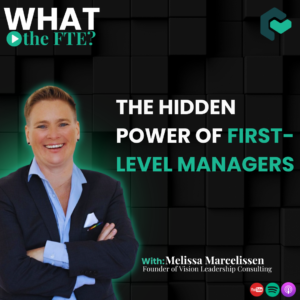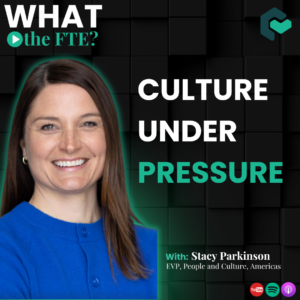Myers-Briggs. DISC. StrengthsFinder. They’re staples of modern HR.
But what if they’re measuring the wrong thing entirely?
Wei Houng, co-founder of HumanOp Technologies, has a radical take.
“We’ve been calibrating human performance on the most volatile side of human existence,” he says of traditional self-assessment questionnaires. “In an instant, your perspective, your opinion, your psychometric pattern can change.”
Wei’s answer? Stop measuring mindset. Start measuring physics.
Over 20 years, HumanOp has developed a physics-based algorithm that claims 99% accuracy in understanding how people are naturally wired. It’s been used by Fortune 100 companies, venture capital firms, and Olympic athletes. The results are staggering: VCs are boosting portfolio returns, athletes are reducing injuries while improving performance and startups are avoiding catastrophic leadership failures before they happen.
Here’s what’s inside:
- Why traditional assessments measure the least reliable part of people
- The 50-gallon vs. 20-gallon gas tank problem destroying your teams
- How physics-based performance optimisation prevents burnout
- Real tactics to engineer flow, not manage personalities
Let’s dig in.
The Assessment Accuracy Crisis No One’s Talking About
“The current tools are based on psychometrics, they’re based on psychology, they’re based on perspectives and opinions,” Wei explained. “And perspectives are the most volatile side of human existence.”
Think about it.
When was the last time a major life event shifted your entire worldview? A health scare. A promotion. A layoff. A breakup.
These moments rewire how we see ourselves and the world around us.
Traditional tools like Myers-Briggs and the Big Five assume stability. They treat personality as a fixed asset. But personalities aren’t fixed. They’re fluid, reactive, and context-dependent.
“You can answer the same assessment on Monday after a great weekend and get one result,” Wei says. “Then take it Friday after a brutal week and get something completely different.”
So what are we actually building on? And why are we surprised when people burn out, disengage, or leave?
Tactical takeaway: Audit your current assessment tools. Ask: What are we measuring? Is it a stable personality trait or a snapshot in time? Can it predict sustained performance?
The 50-Gallon Gas Tank Problem
Here’s Wei’s analogy: “You and I can go train like Usain Bolt. We can eat what he eats, train like he trains. We could do everything that he does to the letter. But you put the three of us on the track, who do you think is going to win?”
Obviously, Bolt.
Why? Because his engine is different. His gas tank is bigger.
“This is the fundamental flaw of traditional performance management,” Wei says. “You take your top performer and tell everyone else to match them. Someone may have a bigger gas tank and higher output potential. But if someone doesn’t have that big of a gas tank, expecting them to perform like someone who does means they’re going to burn out.”
SHRM’s research shows that burned-out employees are three times more likely to leave their jobs than engaged employees. And Deloitte’s 2024 Global Human Capital Trends report revealed that 74% of leaders recognize the need for better ways to measure performance beyond traditional productivity metrics, yet only 17% are effective at doing so.
The problem? Most organizations still compare people to each other instead of helping them compete with themselves.
When you stop the comparison game, things shift:
- Set unique KPIs for each person based on their natural capacity
- Reward sustained performance, not just output volume
- Create a culture of support instead of competition
“When you let people compete with themselves,” Wei says, “engagement goes up. Burnout goes down. And leadership doesn’t have to spend half their time mediating conflict.”
👉 Further Reading: Radically Rethinking Top Talent: A Precision Playbook
What If We Used Physics Instead of Psychology?
“Nature is fundamentally simple,” Wei says. “Complexity is a human invention.”
Here’s what he means.
Every living thing in nature survives by observing physical reality. A tree doesn’t need a personality test to know how to grow toward sunlight. A bird doesn’t need a strengths assessment to know when to migrate.
For 2 million years, humans did the same. We survived by watching, observing, and responding to the physical world. Modern language (the tool we use to create perspectives and opinions) has only been around for 50,000 years.
“So what did we do for 1.95 million years?” Wei asks. “We did what every other being in nature does. We observed nature.”
HumanOp’s algorithm taps into that.
It measures the traits that remain constant, the way gravitational and nuclear forces shape how we move through the world.
“Think of it like this,” Wei explains. “You and I could have the same training, the same speaker cone. But if your box is thick cherry wood and mine’s balsa wood and plexiglass, we take the same speaker, run the same music at the same volume. Is it going to sound the same? No. Because the box is different.”
The assessment takes less than 90 questions and reveals:
- Processing speed and problem-solving style
- Natural energy pools and capacity
- Motivational drivers that promote efficiency
- Optimal times of day for peak performance
“One of our clients had passive traits in the morning,” Wei shares. “But they were taught they had to get up at 5 a.m. and start training. They started getting weird, wonky injuries. We shifted their training to later in the day where their more active traits were prominent. The injuries started to go away.”
👉 Tactical takeaway: Stop forcing morning routines on people who aren’t wired for them. Optimize schedules around natural biorhythms.
The Baby Test: Why We’re All Lying to Ourselves About Triggers
Here’s a thought experiment Wei shared.
“Take a baby and put the baby in front of something that triggers you,” he says. “If the baby doesn’t get triggered, that means you learned how to get triggered.”
“Before we had language, children observe, they watch, they learn,” Wei explains. “They absorb the energy, the vibe, the emotions. That’s how they survive childhood.”
Then language arrived. And with it came stories, interpretations, judgments. We started layering meaning on top of reality. “Somewhere down the road, we use language and we lie to ourselves and distort ourselves out of that understanding,” Wei says.
“But you can’t change physical nature,” Wei says. “You go to a tree and you tell the tree not to be a tree. Good luck. A rock is not going to be anything else but a rock.”
Recent SHRM research found that over 61% of burned-out employees leave work feeling physically and emotionally drained, and 44% report unreasonably high workloads. Much of this stems from roles that don’t align with natural capacity and fluctuations in energy.
👉 Tactical takeaway: Hire for wiring. Then train for skills. Stop forcing people into roles they’re not designed to sustain.
Real ROI: From Venture Capital to Team Dynamics
Wei shared two stories that crystallize this approach.
Case Study 1: The Startup with No Leaders
A boutique VC invested in a brilliant team of developers. The product was solid. The tech was cutting-edge. But they weren’t growing.
“I ran their assessments and immediately saw the problem,” Wei says. “Not one natural leader in the group.”
When he sat down with them, he asked: “How did you pick your CEO?”
Their faces said it all. “We drew straws,” they admitted.
The fix? Treat it like an incubator. Bring in interim leadership (CEO, CFO, COO) while letting the founders focus on what they were naturally designed for: building product.
Result? The company was acquired. The now high-performing team was retained. Everyone won.
Case Study 2: Olympic Athletes
Wei’s team worked with athletes who were training early mornings. But their assessments showed passive morning traits.
“We shifted their training to later in the day,” Wei says. “All of a sudden the injuries started to go away. Their performance level started to go up because they were tapping into the most optimal time of the day for them to maximize those types of activities.”
Deloitte’s 2025 research emphasizes that prioritizing human sustainability (creating value for people as human beings) drives better outcomes for both individuals and businesses.
👉 Psst… Curious what your own wiring looks like? Take the free assessment at HumanOp.org.
How to Implement Physics-Based Performance Optimisation
HumanOp’s compatibility matrix algorithm quantifies team dynamics in real time. Leaders can drag and drop team members into a sandbox and see natural alignment immediately.
Here’s how to read it:
- 70%+ compatibility = Dream team. Minimal management needed. They’ll self-organize and thrive.
- 50-70% = Solid team. Part-time oversight required.
- 30-50% = High-maintenance team. Full-time management necessary.
- Below 30% = Proceed at your own risk. Natural friction is baked in.
“We have clients who won’t hire anyone without running them through the matrix first,” Wei says. “Not because they’re looking for clones. But because they want to know where support will be needed.”
What Changes in Practice
Stop leading with role titles. Start with tasks.
“One of our clients no longer uses traditional role titles,” Wei shares. “They look at the tasks that person is naturally designed for and that they can sustainably do long-term. Then they make up whatever title they want.”
This inverts the entire hiring process. Instead of forcing people into pre-defined boxes, design roles around natural capacity.
👉 Tactical takeaway: Let people compete with themselves, not each other. Set personalized KPIs based on individual wiring, not arbitrary benchmarks.
Final Word: The End of the One-Size-Fits-All Playbook
Here’s what Wei left me with:
“If we get this in the hands of every human being, wars as we know it, conflict as we know it today will be history.”
Think about it. “You don’t go outside and get mad at grass for being green,” Wei said. “Grass is just green. Imagine if human beings can start seeing each other this way. You might trigger me, but I know that’s just your nature.”
What to Remember
- Regular psychometric tests measure volatility. Physics measures constants. Stop building org charts on shifting sand.
- Natural capacity ≠ trained capacity. Burnout happens when we confuse the two.
- The goal isn’t managing personalities. It’s engineering flow. Design systems that fit who people are. Stop asking them to change.
- Compatibility > culture fit. Shared values matter. But so does natural alignment.
If you’d like to hear Wei unpack this in detail, listen to the full episode of What the FTE? below.
🎧 Listen Now:
—
Want more insights like this?
🔗 Browse the full catalogue of What the FTE? episodes
📩 Sign up for the weekly newsletter to get the good stuff straight to your inbox
P.S. Building a high-performance, remote-first team? Certn’s background checks won’t slow you down. 👉 Start screening in minutes—not weeks.





